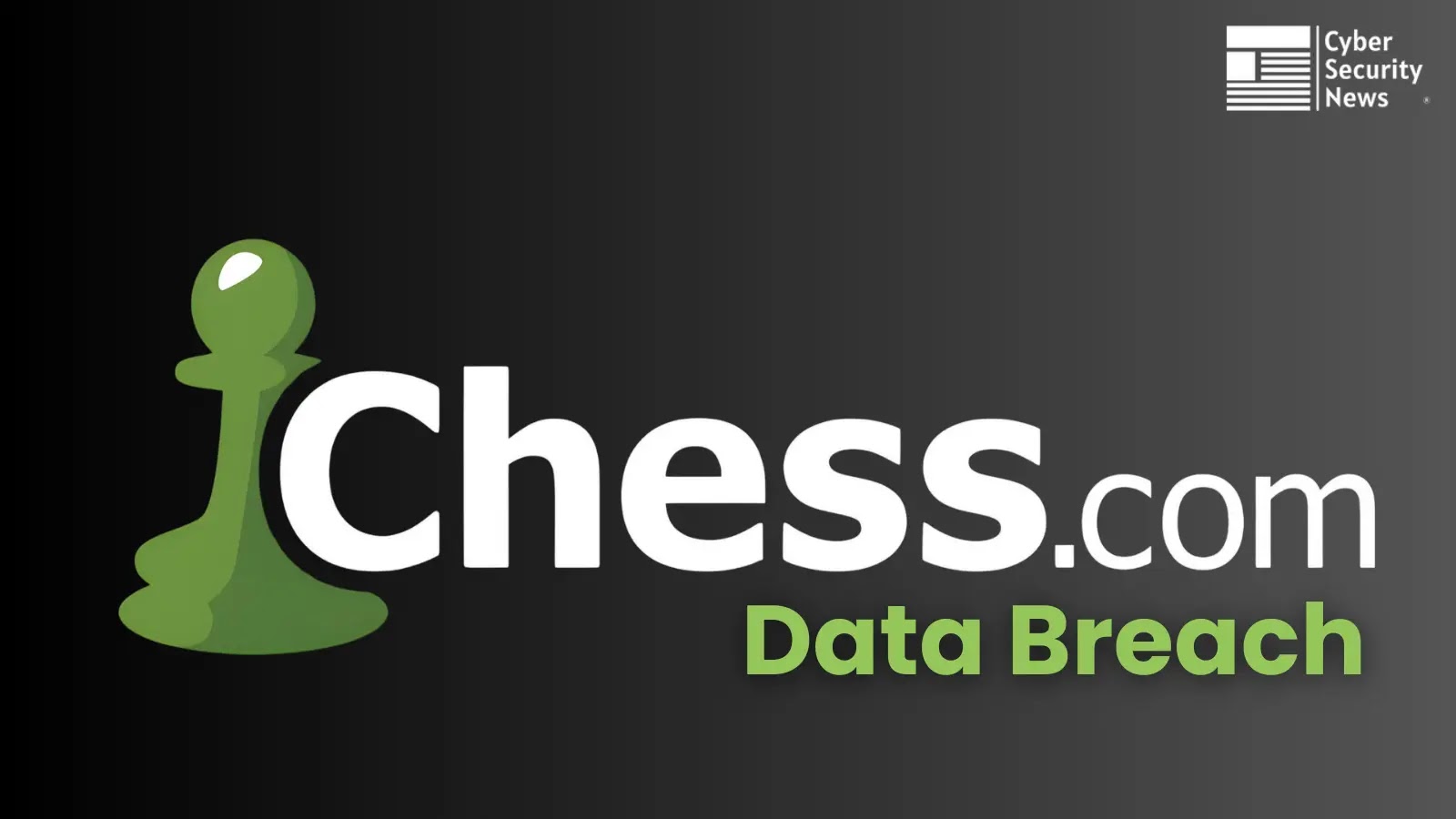
Chess.com Data Breach – Hackers Breached External System and Gained Internal Access
The digital landscape, while offering unparalleled convenience and connectivity, consistently reminds us of its inherent vulnerabilities. Even seemingly innocuous platforms, such as online gaming or strategy sites, are not immune to the sophisticated tactics of cybercriminals. The recent data breach affecting Chess.com serves as a stark reminder that compromised external systems can lead directly to internal network infiltration, exposing sensitive user data.
Understanding the Chess.com Data Breach Incident
On June 19, 2025, popular online chess platform Chess.com publicly disclosed a significant data breach. This incident, which originated on June 5, 2025, compromised the personal information of 4,541 individuals. According to their filing with the Maine Attorney General’s Office, the breach was a direct consequence of an external hack. This isn’t merely about gaining access to an exposed database; the critical takeaway here is that attackers leveraged a vulnerability in an external system to facilitate internal network access – a classic pivot manoeuvre.
The Anatomy of an External System Compromise Leading to Internal Access
The Chess.com incident highlights a common attack vector: the exploitation of third-party or externally accessible systems as a springboard for deeper network penetration. Cyber adversaries often target less secure perimeter systems, such as unpatched web servers, inadequately secured APIs, or compromised vendor portals. Once a foothold is established, these external systems become launchpads for reconnaissance, lateral movement, and ultimately, internal network compromise.
- Initial Foothold: Attackers likely identified and exploited a vulnerability in an external-facing application or service connected to Chess.com’s infrastructure. This could range from a misconfigured API, a SQL injection flaw, or an unpatched third-party component.
- Privilege Escalation & Lateral Movement: After gaining initial access, adversaries typically work to escalate their privileges within the compromised external system. From there, they pivot, moving laterally into the internal network, often exploiting trust relationships or weak internal segmentation.
- Data Exfiltration: With internal access, the objective shifts to identifying and extracting valuable data. In this instance, it involved the personal information of 4,541 individuals.
Implications of the Breach on User Data
While the exact nature of the compromised personal information was not fully detailed in the initial disclosure by Chess.com, “personal information” typically encompasses a range of sensitive data. Depending on the platform, this could include names, email addresses, usernames, hashed passwords, IP addresses, and potentially other demographic or activity data. For users, such a breach can lead to:
- Phishing and Social Engineering: Attackers armed with email addresses and usernames can craft highly convincing spear-phishing emails.
- Credential Stuffing: If hashed passwords were compromised (even if theoretically secure), users who reuse passwords across services are at risk of having other accounts compromised.
- Identity Theft Risk: While less likely for a sheer online gaming platform, any combination of personal data increases the risk of more elaborate identity theft schemes.
Remediation Actions and Proactive Security Measures
For organizations, preventing and responding to such incidents requires a multi-layered approach. The Chess.com breach underscores the need for vigilant security of both internal and external assets.
- Robust Vulnerability Management: Implement a continuous vulnerability scanning and patching program, particularly for all external-facing systems. Prioritize patching known critical vulnerabilities like those associated with CVE-2021-44228 (Log4Shell) or CVE-2021-26855 (ProxyLogon) that can lead to external compromise and internal access.
- Network Segmentation: Strictly segment networks, especially between external-facing systems and internal corporate or user data environments. This limits lateral movement even if an external system is breached.
- Principle of Least Privilege: Ensure that external systems, and the accounts used to manage them, have only the absolute minimum necessary permissions.
- API Security: Implement strong authentication, authorization, and rate-limiting for all APIs, especially those exposed externally. Conduct regular security audits on API endpoints.
- Security Information and Event Management (SIEM): Deploy and actively monitor SIEM solutions to detect anomalous activity that could indicate an intrusion or lateral movement.
- Incident Response Plan: A well-rehearsed incident response plan is crucial for containing breaches promptly and minimizing damage.
Tools for Detection and Mitigation
To aid in bolstering defenses against similar external-to-internal breach scenarios, various tools are indispensable:
| Tool Name | Purpose | Link |
|---|---|---|
| Nessus | Comprehensive vulnerability scanning for network devices, operating systems, and applications. | https://www.tenable.com/products/nessus |
| OpenVAS | Open-source vulnerability scanner providing a framework for vulnerability management. | https://www.greenbone.net/en/community-edition/ |
| OWASP ZAP | Dynamic Application Security Testing (DAST) tool for finding vulnerabilities in web applications. | https://www.zaproxy.org/ |
| Snort | Open-source Intrusion Detection System (IDS) that can monitor network traffic for suspicious activity. | https://www.snort.org/ |
| Splunk Enterprise Security | SIEM solution for collecting, monitoring, and analyzing security data from various sources. | https://www.splunk.com/en_us/software/splunk-enterprise-security.html |
Key Takeaways for Users and Organizations
The Chess.com data breach serves as a powerful illustration of the persistent threat posed by sophisticated cyberattacks. For organizations, it underscores the critical importance of securing every attack surface, from external-facing applications to internal network segments. A single point of failure can lead to significant compromise. For users, the message remains consistent: practice robust password hygiene, enable multi-factor authentication whenever possible, and remain vigilant against phishing attempts. The digital security posture of any entity is only as strong as its weakest link.





